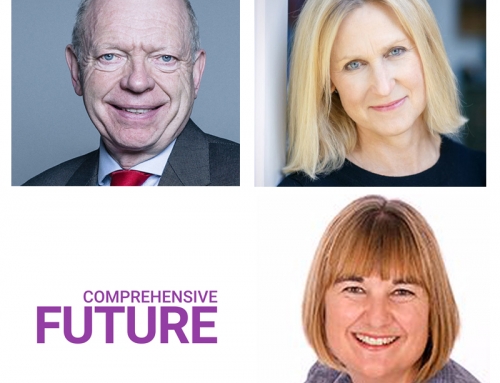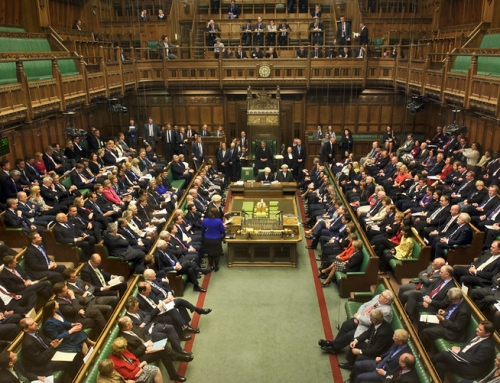Earlier this year, an independent reviewer, David Boyle, and a small team in the Cabinet Office published a report: “The Barriers to Choice Review: How are people using choice in public services?”
Publication followed a review into how people exercise choice in health, social care and education. The education section focused on secondary schools.
So what are the Government’s advisors saying to them about parental choice and school admissions? The report contains interesting observations on how things work at present, some of them good news and some possibly not what Ministers wished to hear.
The review was set up to find out how people exercise choice in the public services and, in particular, how choices are used and valued by the most disadvantaged. It notes that the majority of parents nationwide get their first choice of school at secondary transfer: 85 per cent in 2011. However, it also points out inter-regional differences: 95 per cent in the North-East but only 67.2 per cent in London. The position is summarised thus:
“The parents the review engaged with suggested that, in most places, arrangements around school choice were meeting their needs, though there were some important exceptions to this and there are clearly areas – like London and Kent – where this is not the case.” (p.55)
It is interesting that these two areas are cited as a locus of parental dissatisfaction, since the former has more school diversity than anywhere else in England while the latter still has a fully selective system, with grammar schools and the eleven plus examination. The realities of ‘choice’ in each situation and the implications for national policy are not fully explored but there are relevant insights:
“where the competition is fiercest, then the schools increasingly do the choosing, not the parents.” (p.54)
“the basic pattern remains that the better-off tend to congregate in the best-performing schools…Those more disadvantaged pupils are often excluded from the best schools simply by high house prices…but also because the league tables provide incentives to schools not to take them.” (p.55)
“[Free schools and academies] as well as the faith schools have their own criteria for dealing with over-subscription, involving a complex mixture of proximity, religiosity, academic ability and catchment areas.” (p.57)
There is also a telling quote from an independent education adviser in Kent:
“There are children being coached in Kent from the age of six. There are private schools here which have the sole aim of getting children into grammar schools. A lot of the children who are sent there are also coached privately outside the school. What a life.” (p.58)
The review considers ways of spreading demand more equally through the system where some schools are heavily over-subscribed. It does not quite get to grips with the fact that, as long as some schools are allowed to select large numbers of higher-achieving children and few if any of those who are hard to teach, there will be a hierarchy of prestige in the eyes of many parents. However, it makes a strong statement in favour of schools recognising a duty to admit a socially-balanced intake:
“Giving the least advantaged more power to overcome their particular barriers to choice means finding ways of making schools feel more responsible for meeting their needs. The review considered whether inward-looking admissions criteria, for example by faith and super-selective schools, ought to be balanced by a broad duty to promote a social balance inside the school. State-funded schools which do not adopt some responsibility for the wider well-being of their neighbourhood may not be fulfilling the social contract that people might reasonably expect of them.” (p.61)
The main conclusions are not accompanied by radical solutions:
• The conclusion that ‘some people need more help to steer effectively through an increasingly complex system’ is not accompanied by suggestions for reducing the complexity.
• The conclusion that ‘there is a need to find ways of ensuring the least advantaged children have fair access to the best schools’ is not accompanied by proposals for change in school admissions policies and practices .
The recommendations designed to affect school admissions and assist choice are:
• More information provided about schools (details specified)
• “A parallel ‘opportunity transformation’ league table, comparing the performance of schools in achieving the best outcomes for free school meal children and narrowing the attainment gap.”
The second one is intended to nudge schools which are high in the existing league tables and have few pupils from low-income families into admitting more of them. This parallel table would exclude schools which accept well below the national average of FSM pupils and its impact is seen as dependent on its being celebrated and providing ‘strategic advantages’ for those schools which score well.
One cannot help feeling sceptical about the likely success of this proposal in changing the behaviour of schools which pick and choose their pupils. The new table could even have the opposite effect to that intended, defining and perpetuating a social hierarchy of schools.
More to the point, if a government believes there is injustice inherent in the way the state school system operates and wants to see it eliminated, it can do so through regulation or system change. It’s no good relying on the whim of those who benefit from the way things are.
Janet Dobson
Comprehensive Future Steering Group Member




